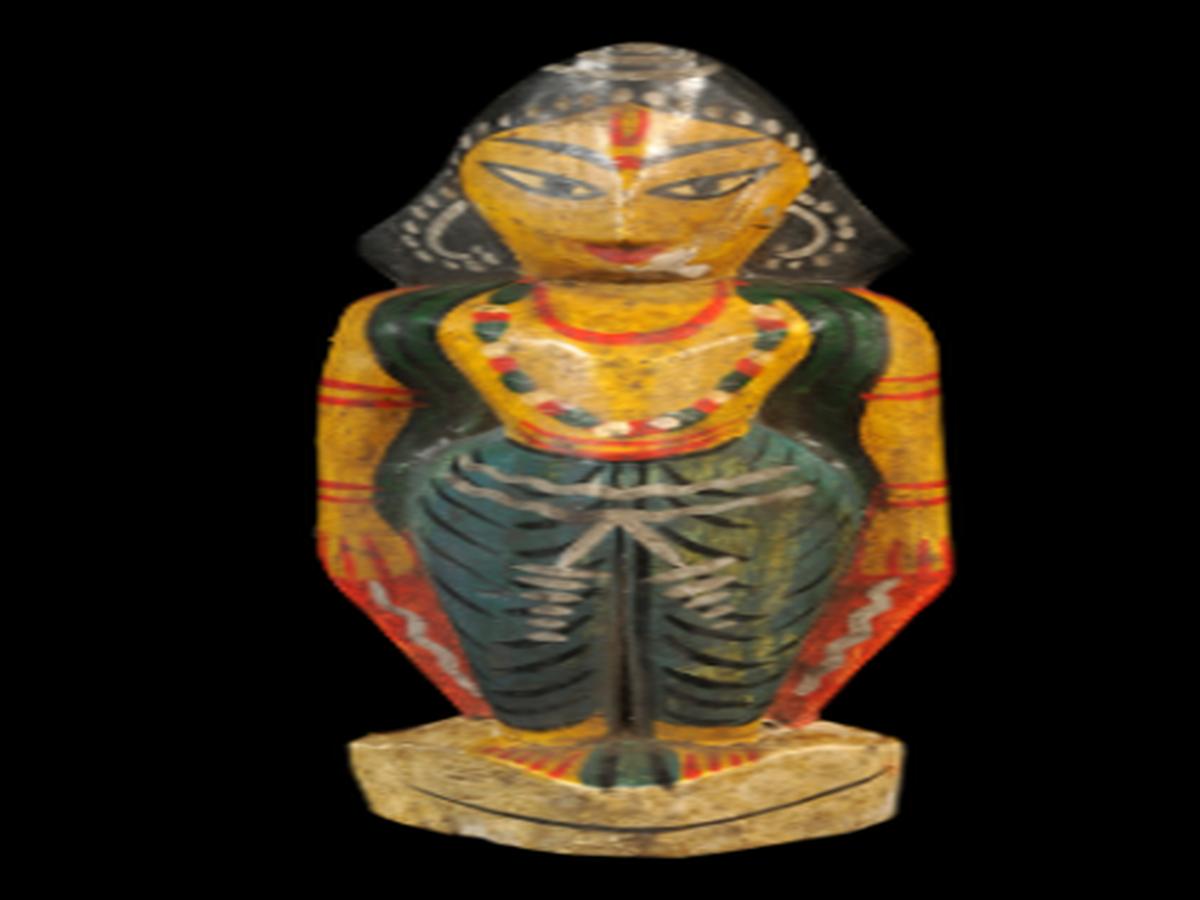State
Tribe Name
Art Type
short description
Sutradhar from West Bengal created this exquisite sculpture of Gouranga, one of the most exquisite examples of devotional art as relative to that region's religions. This is the figure of Chaitanya Mahaprabhu, popularly known as Gouranga, the saint of the 15th century and one of the greatest personalities of Gaudiya Vaishnavism. Most of them consider him to be an incarnation of Lord Krishna, propagating love, devotion (bhakti), and togetherness through sankirtana- the best form of devotional singing and dancing. The figure, carved from a single block of red wood, stands firmly on a triangular pedestal, suggesting permanence and worship. Arms drawn straight down in line with the body and figure acquire a placid, lifeless, calm posture that suggests a moment of meditation or blessing. Traditionally the image is painted yellow, a shade that signifies divinity and the halo of enlightenment that zealously surrounded Chaitanya in devotional iconography.
Thumbnail

Filter Postion
Right
Filter Background
Off
Theme
Filter Header Image

content
Image

description
Sutradhar from West Bengal created this exquisite sculpture of Gouranga, one of the most exquisite examples of devotional art as relative to that region's religions. This is the figure of Chaitanya Mahaprabhu, popularly known as Gouranga, the saint of the 15th century and one of the greatest personalities of Gaudiya Vaishnavism. Most of them consider him to be an incarnation of Lord Krishna, propagating love, devotion (bhakti), and togetherness through sankirtana- the best form of devotional singing and dancing. The figure, carved from a single block of red wood, stands firmly on a triangular pedestal, suggesting permanence and worship. Arms drawn straight down in line with the body and figure acquire a placid, lifeless, calm posture that suggests a moment of meditation or blessing. Traditionally the image is painted yellow, a shade that signifies divinity and the halo of enlightenment that zealously surrounded Chaitanya in devotional iconography.
Green-painted attire, however, differs sharply from visualization; it converts into life, renewal, and harmony. An inverted "U"-shaped mark made on the forehead forming the Vaishnava tilaka determines one as a devotee of Lord Vishnu as well as an implication of purity of spirit; this tilaka ado speaks volumes about its importance in iconography of saints and devotees in the Vaishnavism tradition. There's a lot of good woodwork in the Sutradhara tribe, with different painted sculpture herbs of religion. Most of these will either be purely decorative or offer temple type as well as those for village shrines. This material also finds it space within post-Indian Museum of Kolkata as a cultural-religious artifact.
Image Mode
landscape
promoted
On
Verified
Off
